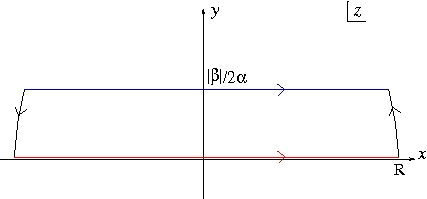
The following integrals will be useful:
Often we are faced with a somewhat more complicated integral, which can be cast in Gaussian form by “completing the square” in the exponent and then shifting integration variable :
This works even if is imaginary. One way of seeing this is as follows. In the diagram below, as the blue contour is the original one (with imaginary) and the red one the new contour after shifting; the red and black paths together must equal the blue since there are no poles in the region bounded by the complete contour. However as tends to zero faster than as providing , the contribution from the black paths is zero. Hence the two integrals must be the same.
